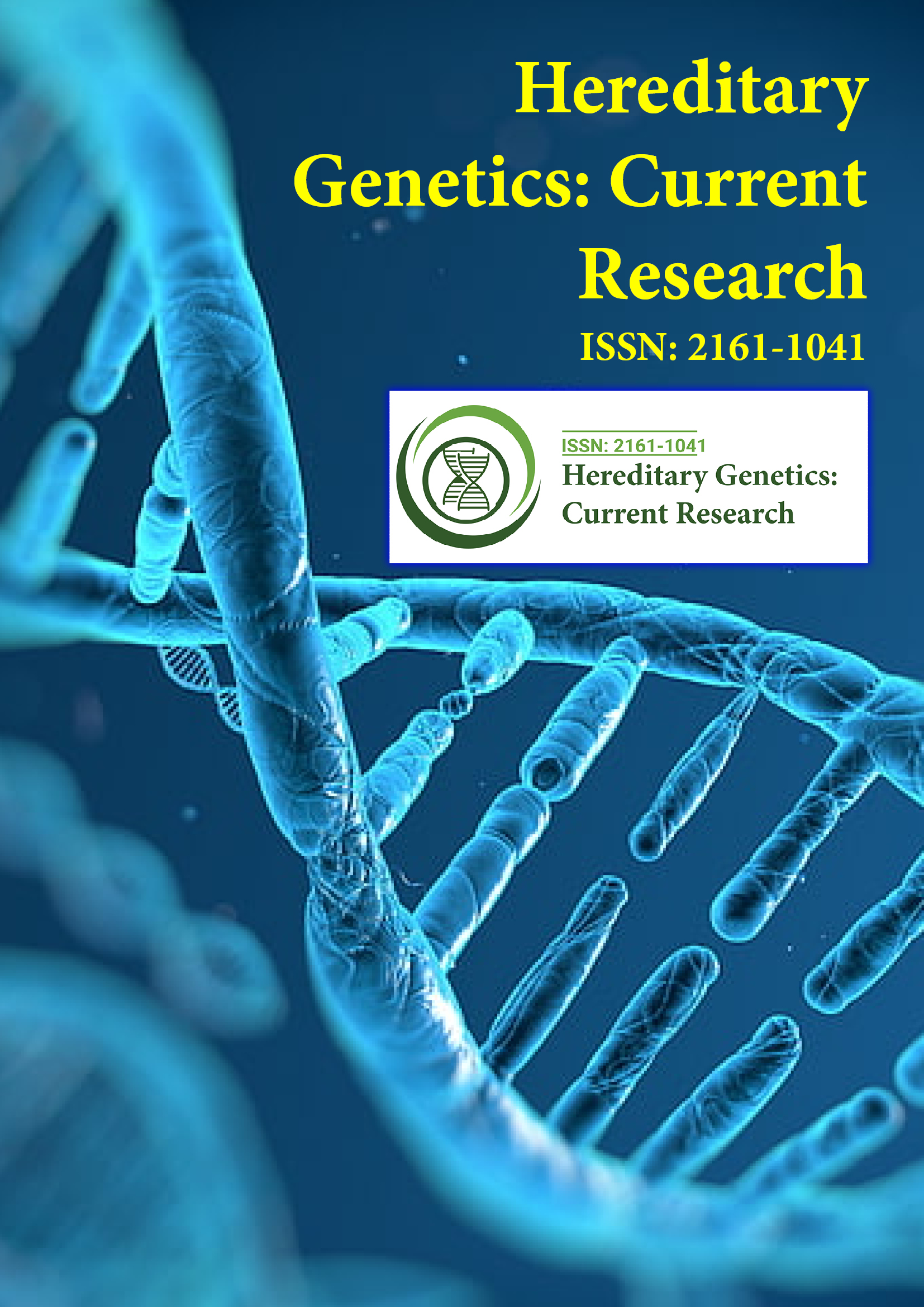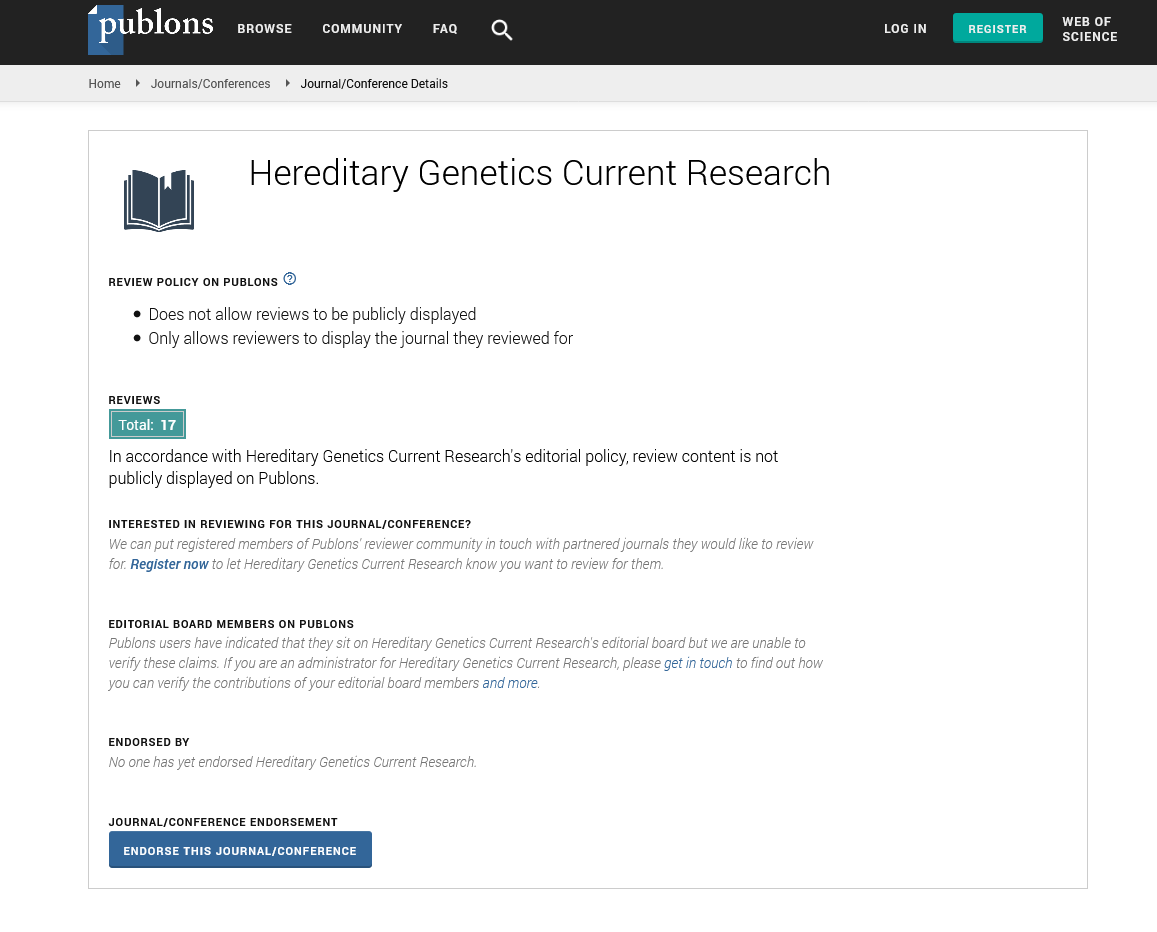Indexed In
- Open J Gate
- Genamics JournalSeek
- CiteFactor
- RefSeek
- Hamdard University
- EBSCO A-Z
- NSD - Norwegian Centre for Research Data
- OCLC- WorldCat
- Publons
- Geneva Foundation for Medical Education and Research
- Euro Pub
- Google Scholar
Useful Links
Share This Page
Journal Flyer

Open Access Journals
- Agri and Aquaculture
- Biochemistry
- Bioinformatics & Systems Biology
- Business & Management
- Chemistry
- Clinical Sciences
- Engineering
- Food & Nutrition
- General Science
- Genetics & Molecular Biology
- Immunology & Microbiology
- Medical Sciences
- Neuroscience & Psychology
- Nursing & Health Care
- Pharmaceutical Sciences
Perspective - (2025) Volume 14, Issue 1
Integrating Polygenic Risk Scores, Clinical Factors and Genetic Pathways in Schizophrenia: Clinical and Gynecological Implications for Women
Bigdeli Forstner*Received: 26-Feb-2025, Manuscript No. HGCR-25-28189; Editor assigned: 28-Feb-2025, Pre QC No. HGCR-25-28189 (PQ); Reviewed: 14-Mar-2025, QC No. HGCR-25-28189; Revised: 21-Mar-2025, Manuscript No. HGCR-25-28189 (R); Published: 28-Mar-2025, DOI: 10.35248/2161-1041.25.14.305
Description
Schizophrenia is a complex, multifactorial psychiatric disorder with both genetic and environmental components contributing to its development. Over the years, genetic studies have played a significant role in understanding the biological underpinnings of schizophrenia, providing insights into the polygenic nature of the disease. Polygenic Risk Scores (PRS) are increasingly used to predict an individual’s genetic predisposition to schizophrenia by aggregating the effects of many genetic variants, each contributing a small amount to the overall risk. However, while PRS have made strides in understanding genetic risk, they remain limited in clinical applicability without considering other contributing factors, such as clinical variables and genetic pathways. This manuscript explores how schizophrenia polygenic risk scores, clinical variables, and genetic pathways intersect to provide a comprehensive view of the disease, alongside insights into gynecological management for women with schizophrenia.
Schizophrenia is known to have a substantial genetic component, with twin and family studies suggesting that up to 80% of the risk for schizophrenia is hereditary. As our understanding of schizophrenia genetics has advanced, polygenic models have become central in research. Polygenic risk scores are constructed by summing the effects of a large number of common genetic variants, typically Single Nucleotide Polymorphisms (SNPs) that are identified through Genome-Wide Association Studies (GWAS). Each SNP has a small, but additive, effect on risk, making the total risk score an aggregate measure of genetic susceptibility. These scores can potentially be used to assess the genetic risk in individuals, offering an early warning of susceptibility even before the onset of clinical symptoms.
However, PRS alone do not capture the full complexity of schizophrenia. Despite the significant advances in identifying genetic risk factors, the predictive power of these scores remains limited. Schizophrenia is a heterogeneous disorder, and genetic predisposition does not act in isolation; environmental factors, such as prenatal stress, childhood trauma, or drug abuse, can influence the onset and progression of the disease. Therefore, clinical variables must be integrated with genetic risk scores to refine risk prediction and inform treatment strategies. Key clinical variables include age of onset, family history of psychiatric disorders, cognitive performance, and comorbidities, which can help clinicians determine the severity and prognosis of the disorder.
Genetic pathways play a crucial role in schizophrenia's pathophysiology. Several biological systems have been implicated, including those related to neurotransmitter signaling (particularly dopaminergic and glutamatergic systems), neurodevelopment, synaptic plasticity, and immune function. For example, disturbances in dopamine transmission are believed to contribute to positive symptoms such as delusions and hallucinations. Likewise, the glutamate hypothesis of schizophrenia suggests that hypofunction of NMDA receptors leads to cognitive deficits and negative symptoms. Genetic variants associated with these pathways, along with others linked to neuronal development and synaptic signaling, further contribute to the complexity of schizophrenia. A deeper understanding of these pathways is essential for developing targeted treatments that address the underlying biological mechanisms rather than just the symptoms.
The intersection of schizophrenia, genetic risk, and clinical variables has important implications for treatment and management. Although antipsychotic medications remain the cornerstone of treatment, they primarily target dopamine receptors and may not adequately address all symptoms, particularly cognitive impairments and negative symptoms. Given the polygenic nature of schizophrenia, personalized medicine, which integrates genetic information, clinical assessment, and environmental factors, holds the promise of more effective treatments. Precision psychiatry aims to move beyond a one-size-fits-all approach by tailoring interventions based on an individual’s genetic risk profile, symptomatology, and treatment response.
In women with schizophrenia, gynecological management is an important yet often overlooked aspect of care. Schizophrenia itself, as well as its treatment, can have significant effects on a woman’s reproductive health. Many antipsychotic medications, particularly those that block dopamine receptors, can induce hormonal changes, leading to menstrual irregularities, galactorrhea, and in some cases, infertility. Women with schizophrenia also have a higher risk of developing metabolic conditions, such as obesity and diabetes, which can further complicate gynecological health.
In conclusion, the impact of schizophrenia and its treatment on pregnancy outcomes cannot be ignored. Pregnancy in women with schizophrenia poses unique challenges, both in terms of managing psychiatric symptoms and ensuring optimal maternal and fetal health. The use of antipsychotic medications during pregnancy must be carefully considered, as some drugs have been associated with adverse outcomes, such as low birth weight and preterm birth. Clinicians need to balance the benefits of controlling psychiatric symptoms with the potential risks to fetal development, making individual treatment planning critical.
Citation: Forstner B (2025). Integrating Polygenic Risk Scores, Clinical Factors and Genetic Pathways in Schizophrenia: Clinical and Gynecological Implications for Women. Hereditary Genet. 14:305.
Copyright: © 2025 Forstner B. This is an open access article distributed under the terms of the Creative Commons Attribution License, which permits unrestricted use, distribution, and reproduction in any medium, provided the original author and source are credited.

